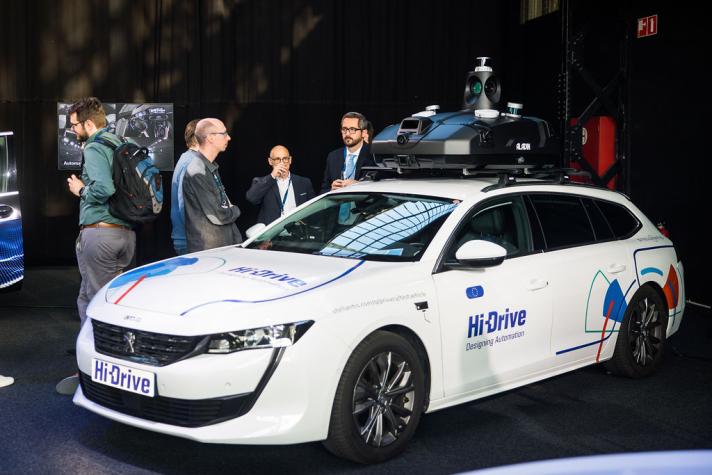
Organised jointly on 3-4 May 2023 by the European Commission, the European Partnership on CCAM and the FAME project, #EUCAD2023 gathered together political leaders from the Commission and EU Member States with policymakers, regulators and representatives of industry, research institutes, public transport operators, road authorities and insurance companies.
The two-day hybrid event attracted more than 600 delegates with over 400 on-site in Brussels, with many from Europe but also from further afield including the US, Japan, and Korea. Discussions centered around whether technology and society is ready for the deployment of smart, inclusive and sustainable CCAM mobility solutions. Exchanging experience within both the European context as well as internationally, proved hugely beneficial for all attendees.
Alongside the main conference, many CINEA-backed research projects displayed the latest CCAM technologies and innovations at the networking exhibition, co-organised by the European Council for Automotive R&D (EUCAR) in the Brussels Autoworld Museum.
CINEA also launched a new brochure at the conference, presenting a comprehensive overview of CCAM projects funded under the first two calls in 2021 and 2022 of the EU’s Horizon Europe programme for research and innovation, and managed by the Agency.
Importance of synergies
Speakers at the first plenary session, "From research to real world: Driving CCAM toward market and social uptake", emphasised that research and innovation cannot be seen in isolation. There are many funding opportunities but that investment needs to break into the market. This is where cooperation between industry and national, European, and international programmes is key to leverage the investment, build a common vision and maximise impacts from innovation investments.
CINEA Acting Director, Paloma Aba Garrote, underlined the importance of exploiting synergies and complementary support between programmes, notably the Connecting Europe Facility (CEF) for Transport, and the EU’s large-scale research and innovation programme, Horizon Europe:
"In CINEA, with our large-scale funding opportunities for CCAM and by connecting the dots between complementary support programmes, we are helping to bridge the gap between research and marketplace."
Rosalinde Van der Vlies, Clean Planet Director in the European Commission’s Department for Research and Innovation (DG RTD), reinforced this holistic approach, explaining how EU support can fill in funding gaps where national funds are not available. However projects need to demonstrate their European-wide added value and wider goals of a more sustainable mobility system:
“To increase the impact of our R&I programmes and to reach a more resilient, smart and sustainable mobility system, we have to strengthen synergies and cooperation."
During the second plenary session, participants discussed how all stakeholders need to work together to make CCAM a reality. For example, data sharing is crucial for the advancement of CCAM. This in turn implies the need for clear and harmonised legal frameworks to make cooperative intelligent transport systems (C-ITS) work, coupled with the necessary infrastructure upgrades.
Sharing knowledge and moving forward
The event provided an excellent forum for sharing lessons learned so far, and exchanging on the way forward, with some key takeaways identified in the concluding session:
- The industry has matured to the point where standards, regulations, and broad adoption are now the main priorities
- More pilots, testing, and information exchange are needed to increase public confidence in these technologies - the conference provided a wealth of examples of successful CCAM projects, including regulation for automated driving systems, 5G connection corridors, alternatives for short-range connectivity, as well as funded research projects like SHOW that aims to advance sustainable transport through automated urban mobility solutions
- Sharing knowledge is vital in order to make the transition to CCAM solutions as smooth and quick as possible
More
CCAM Partnership: Detailed event report
Brochure: Toward Cooperative, Connected and Automated Mobility
Details
- Publication date
- 11 May 2023
- Author
- European Climate, Infrastructure and Environment Executive Agency



